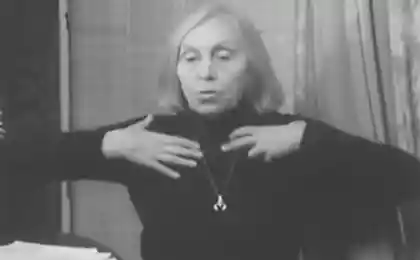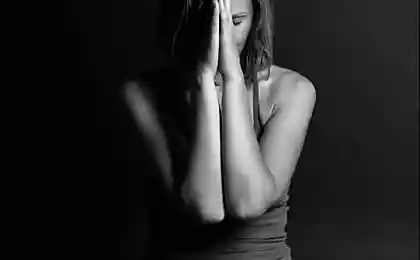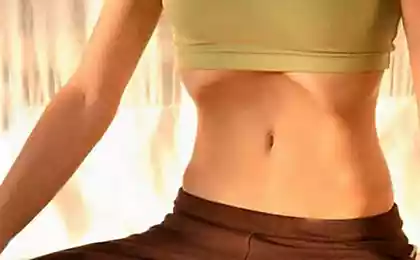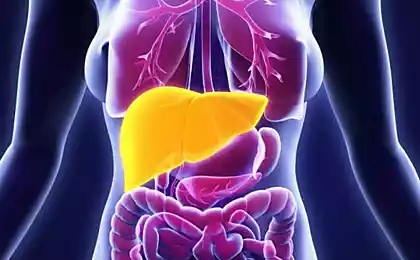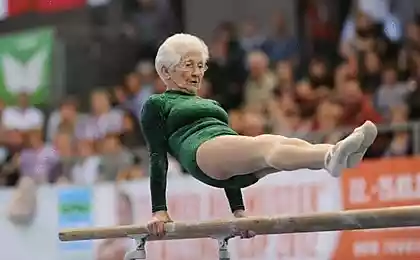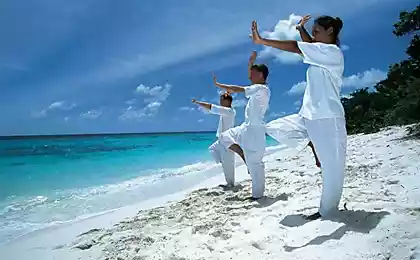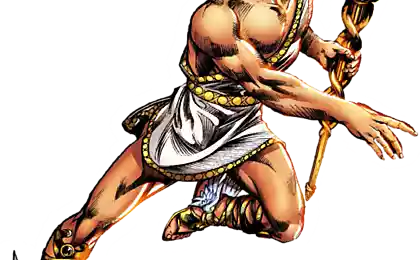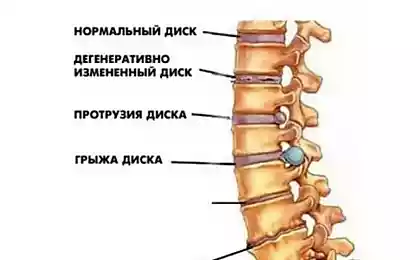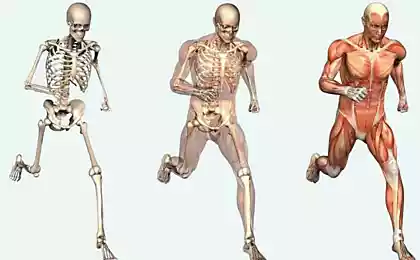284
How to treat knees
Vitaly Gitt has been treating arthrosis and arthritis for many years. He developed different sets of rehabilitation exercises that can be mastered independently and performed at home.
On the principle of homeopathy
Few people manage to keep joints healthy until old age. And unhealthy joints are known to cause pain - sometimes very severe. In addition, the joint loses mobility. A person cannot move freely, it is difficult for him to climb the stairs, go to the store, even take a bath. . .
One of the main contradictions in the treatment of arthrosis and arthritis is the benefits and harms of active movement for diseased joints. Lack of movement leads to accelerated degradation of the diseased joint, but with a significant load on the joint of the diseased cartilage is also intensively destroyed. Based on my many years of practice, I can say that only those exercises that do not create a large load on the joint are useful. In approach, it's like homeopathy.
The various exercises I have developed for different joints with different degrees of their damage, have in common - they are all performed for a very long time (for several hours a day), with a minimum amplitude of movements and minimal load on the joint.
If the joint is not loaded, and the amplitude of movements is small, then, on the one hand, there are no destructive processes, and on the other, there is a constant circulation of synovial fluid in the places of conjugation. Nutrients are delivered to places of friction. As a result, there is a regeneration of destroyed articular surfaces.
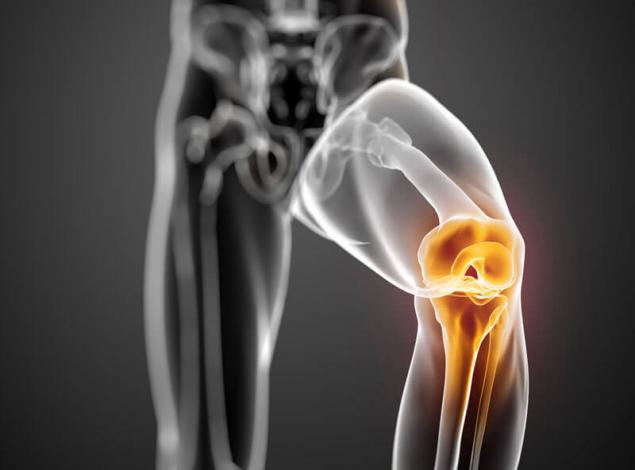
It all starts with trauma.
Knee joints hurt more often than hip joints, although complete immobility with gonarthrosis is less common than with coxarthrosis.
The most common cause of knee disease appears to be injury. Children begin to break 14 knees from the earliest years. It so happens that, tripping, the child usually falls on them. With age, the nature of injuries changes, but the knees still suffer more than other joints. What's the reason? Why is the knee, unlike the hip, so easily injured?
The hip joint is spherical, it has three degrees of freedom and allows movement in all directions and rotation along the longitudinal axis. It can be injured either by a very strong blow or by a strong stretch, for example, an attempt to sit in a twine without adequate preparation. And the knee joint is cylindrical, and the degree of freedom it has only one (movements are possible in one direction). Therefore, dangerous situations for the knee are much more common. With transverse, or twisting loads, the knee joint easily loses stability and is injured.
Self-help for trauma
You twisted your leg and fell. The knee is swollen, there is a sharp pain inside. Ligaments are most likely torn; a meniscus may have been injured. What do I do? How to reduce damage and speed up recovery?
First of all, take urgent measures to reduce internal hemorrhages and edema. To do this, tie the knee tightly with an elastic bandage in an unbended position. From above, it is desirable to attach a heating pad with cold water. At the first opportunity, place the sick leg on the elevation. If the pain is very severe, take an analgesic. From time to time, the bandage should be removed and give the leg a breather. Thermal procedures, ointments such as finalgon or vipratox in the first days after injury are prohibited.
Sometimes in the area of the injured joint (not only the knee) there is a soft protrusion. When probing, it seems that it is filled with liquid. Without treatment, this effusion can persist for life. The liquid needs to be pumped out. If this is not done immediately, then after some time to remove it will need surgery.
We could try something simpler. Take a piece of soft foam and wrap it with a bandage. You should have an elastic ball the size of a little more swelling on the knee. The ball is superimposed on the place of effusion and wrapped with an elastic bandage. A few days is usually enough for healing. Just remember to rest your leg.
The first heat treatments for the knee are done 3-4 days after the injury. You can apply a heating pad, put compresses or rub your knee with irritating ointments. It is very useful, sitting in the bath, massage the sore spot with a hot shower. It is even more useful to change the temperature - according to the principle of contrast procedure. But until the habit has developed, it should be done with caution. . .
A month has passed. If the injury of this kind was the first, then during this time the pain will almost pass. It would seem that the leg should work again fully, but ... it does not work. That's the first complication. My leg has lost mobility. It can't be completely bent. Or it does, but with pain.
We need to start treatment. Strength exercises, muscle strengthening, jogging will not help. You need to start patient development of the joint.
Exercise 1
Holding hands on the support, make light squats.
The level of squats - until the first mild pain.
Perform 2 times a day for about 5-10 minutes, with breaks - so as not to allow sharp pain.
After a knee injury, many complain that it has become difficult to bend, that at the same time there are pulling pains on the back of the hip, especially under the knee. The reason is that due to the lack of proper load, tendons “set” or shorten. Various slopes are recommended for treatment.
Exercise 2
Sit on the floor, stretch out your legs and lean forward until light pain appears. Cover your legs and sway slightly back and forth, helping with your hands. The angle of inclination does not play a role, focus only on pain.
Perform the exercise 2-3 times a day for 3 minutes.
In conclusion, rot back in the back.
One to two months of such exercises are usually enough to restore mobility and stop joint pain.
"Mouse" in the knee
Sometimes in the knee joint there is an extremely unpleasant phenomenon. Suddenly, all of a sudden, he's jammed. Any movement becomes impossible. In the area of the joint gap there is severe pain. It seems that it can not be more painful, but with the slightest movement the pain increases.
It's a mouse. A piece of cartilage broke off, most likely from the meniscus. And moves around the joint. And when it hits the joint gap, the leg “jams”. A characteristic feature of the "mouse" - it can appear in different places.
If this happens to you, don’t panic. But do not try to overcome the pain, show heroism, continue the movement. There may be serious damage to the joint surfaces and prolonged pain. If conditions permit, sit down. Try, slightly shaking your foot, very carefully bend-extend the leg, thereby expanding the joint gap from the "mouse".
A few minutes of such movements - and the pain suddenly passes. The mouse left the mink. Where did she go? He's traveling around the joint bag somewhere. Until next time... However, "mouse" do not live long. A month or two, and will cease to appear in the wrong place. So don't despair!
The best prevention is stretching
Practice shows that in the vast majority of patients, it is not limited to one injury. And treating each subsequent one becomes increasingly difficult. And here the development of arthrosis is guaranteed.
What do we do? How do you avoid injuries? One way out. The mobility of the joint should be increased. Then it will be easier to carry transverse loads. And in order to achieve this, you need to do stretching exercises.
Exercise 1
Sit on the floor, stretch the straight right leg forward, and put the left foot on the right thigh. Slightly press the left knee, trying to press it down to the floor. Change the position of your legs.
Exercise 2
Keeping the previous position, make bends to the outstretched leg. First to one, then to the other.
Exercise 3
Connecting the soles, pull your feet to the buttocks. Hold your knees against the floor.
Exercise 4
Keeping the previous position, make bends forward.
Exercise 5
Sit on a chair or on the floor. Widely place the bent legs and, without tearing the soles from the floor, bring the knees together, helping yourself with your hands.
Each exercise is performed 1-2 minutes 2 times a day.
Treatment of arthrosis and arthritis
What if your knees have been hurting for months or even years? If the knee joints are deformed, inflamed and almost immobile? We are talking about a chronic disease - arthrosis-arthritis. In this case, I advise you to master another set of exercises.
All exercises are very light, painless. They can be performed even in extremely advanced cases. Start with 5-10 minutes and gradually increase their execution time to several hours during the day.
Exercise 1. Humpty Dumpty (knee only)
Sit on a high chair or table so your feet hang freely. Shake your feet a little. The amplitude of movements is not more than 10 cm.
The exercise is performed very easily and relaxed.
For the most severe patients - 5 minutes every hour, the rest - several times a day for 5-10 minutes.
It is very important to do the exercise so that you do not feel the slightest pain!
Exercise 2. "Top-top" (for knee, ankle and hip joints)
Sit on a chair, put your feet on the floor. Relying on the sock, remove the heel 1-2 cm from the floor, then loosely lower it. Rest for 3 seconds and repeat the movement.
If both legs are affected, the movement is performed alternately, with a pause of a few seconds.
Exercise 3. "Slap-slap" (for knee and ankle joints)
The starting position is the same as in exercise 2.
Relying on the heel, relaxed, slowly, slap your socks on the floor. Lift your socks no more than 1-2 cm from the floor.
The pause between movements is 3 seconds.
Note: none of the recommended exercises should give at least the slightest pain. If you feel pain, stop the exercise immediately! Joint pain is bad.
For serious diseases, the exercises “top-top” and “slap-slap” are recommended to perform many hours a day. They can be made at home, at work, in the subway and even in the theater - no noise, no inconvenience. You do not draw attention to yourself or distract from the main occupation.
But exercise is not enough. And the sleeves, the sleeves, and the muscles. Therefore, external influence is required - manual study of the joint, joint bag and tendons.
Joint development
The knee is one of the few joints that can be worked independently.
When working out it, three types of blows are used - spanking, punching through the fingers and punching through the palm.
Splashes in the joint area affect mainly the skin. They cause a rush of blood and activation of nerve pathways.
Blows through pressed fingers affect the muscles, joint bag, ligaments, tendons. Tightly pressed fingers softer convey the energy of the impact to the desired place, squeeze blood from the capillaries, but do not allow their damage (bruising).
Finally, the blows through the pressed palm are not applied to the joint, but to the adjacent section of bone. Their purpose is to influence the inner part of the joint, and in particular on its working surfaces.
Start with tapping through the pressed fingers, paying special attention to painful places and areas with increased noise levels. (You can determine such areas by putting your palm firmly to your knee and bent and straightened your leg several times.) Blows on the kneecap are applied slightly from the side. The muscles should be as relaxed as possible. The strength of the blows depends on the severity of the defeat. If the joint is very sick, the blows should be very careful and light, and as rehabilitation - intensify.
During this procedure, moderate pain should be felt. Back, in the hamstring, you can not strike. The affected tendons are tapped with maximum care so as not to touch the adjacent areas. After tapping, several blows are applied through the pressed palm, right, left and front, just below the knee, on the straightened and then on the bent leg. The procedure ends with spanks.
In diseases of moderate severity, such procedures are repeated weekly. In mild cases - in 1-2 days. With severe arthrosis and arthritis, accompanied by severe inflammation and swelling - 1 time in 10-15 days.
Help your joints cope with loads
Exercise for chronic diseases of the knee joints
Exercise 1.Sit on a high chair, so that the legs hang freely, without reaching the floor. Shake your feet like a pendulum. My legs are completely relaxed. The amplitude of movements is small - only a few centimeters. When moving, not the slightest pain should be felt.
Perform 2 times a day for 10-15 minutes. If the legs begin to leak, stop the exercise and lie down a little, lifting them. If the muscles get tired, do not perform a feat, but just rest.
Exercise 2.Sit on a low chair or bench. The soles are on the floor. Relax “walk”, tearing off and lowering socks and heels. The amplitude of movement is very small. The total execution time is 1 hour per day. The exercise is also useful for the ankle and hip joints.
All exercises are necessarily combined with external work with the hands of the joints, joint bags and tendons, performed in the position of the patient sitting on a chair.
In the treatment of the knee joint, all types of strokes are used.
• Start with tapping through the pressed fingers, paying special attention to painful places and areas with increased noise levels. You can determine such areas by putting your hand firmly to your knee and bent and straightened your leg several times.
• Blows with a fist on the kneecap through the pressed fingers are applied slightly from the side, having previously moved it along the direction of the impact (Fig. 1, a). The muscles are as relaxed as possible. The strength of the blows depends on the severity of the defeat. If the joint is very sick, blows are applied carefully and easily, and as rehabilitation increases them.
• Blows with a fist through the pressed palm are applied not to the joint, but to the adjacent bone area - 4 cm above and below the center of the cup (Fig. 1, b). The purpose of blows is to create a shear load and affect the inside of the joint gap and on the working surfaces of the joint. During this procedure, moderate pain should be felt.
• The affected tendons from behind are tapped with maximum care so as not to touch the adjacent areas. You can't hit the hamstring!
• A few heavy punches are applied from the front through the pressed palm, right, left, slightly above and slightly below the knee, on the straightened, and then on the bent leg.
• Finish the procedure with slaps on the knee. Sharp spanking in the joint area affects mainly the skin, causing a rush of blood and activation of the nerve tract.
In mild cases, the procedures are repeated after 1-2 days. For diseases of moderate severity - weekly. With severe arthrosis, accompanied by severe inflammation and edema, 1 time in 10-15 days. published
Author: W.D. Gitt
P.S. And remember, just by changing our consumption – together we change the world!
Join us on Facebook, VKontakte, Odnoklassniki
Source: www.gitt.ru/articles/bud_zdorov/kak_lechit_koleni/
On the principle of homeopathy
Few people manage to keep joints healthy until old age. And unhealthy joints are known to cause pain - sometimes very severe. In addition, the joint loses mobility. A person cannot move freely, it is difficult for him to climb the stairs, go to the store, even take a bath. . .
One of the main contradictions in the treatment of arthrosis and arthritis is the benefits and harms of active movement for diseased joints. Lack of movement leads to accelerated degradation of the diseased joint, but with a significant load on the joint of the diseased cartilage is also intensively destroyed. Based on my many years of practice, I can say that only those exercises that do not create a large load on the joint are useful. In approach, it's like homeopathy.
The various exercises I have developed for different joints with different degrees of their damage, have in common - they are all performed for a very long time (for several hours a day), with a minimum amplitude of movements and minimal load on the joint.
If the joint is not loaded, and the amplitude of movements is small, then, on the one hand, there are no destructive processes, and on the other, there is a constant circulation of synovial fluid in the places of conjugation. Nutrients are delivered to places of friction. As a result, there is a regeneration of destroyed articular surfaces.

It all starts with trauma.
Knee joints hurt more often than hip joints, although complete immobility with gonarthrosis is less common than with coxarthrosis.
The most common cause of knee disease appears to be injury. Children begin to break 14 knees from the earliest years. It so happens that, tripping, the child usually falls on them. With age, the nature of injuries changes, but the knees still suffer more than other joints. What's the reason? Why is the knee, unlike the hip, so easily injured?
The hip joint is spherical, it has three degrees of freedom and allows movement in all directions and rotation along the longitudinal axis. It can be injured either by a very strong blow or by a strong stretch, for example, an attempt to sit in a twine without adequate preparation. And the knee joint is cylindrical, and the degree of freedom it has only one (movements are possible in one direction). Therefore, dangerous situations for the knee are much more common. With transverse, or twisting loads, the knee joint easily loses stability and is injured.
Self-help for trauma
You twisted your leg and fell. The knee is swollen, there is a sharp pain inside. Ligaments are most likely torn; a meniscus may have been injured. What do I do? How to reduce damage and speed up recovery?
First of all, take urgent measures to reduce internal hemorrhages and edema. To do this, tie the knee tightly with an elastic bandage in an unbended position. From above, it is desirable to attach a heating pad with cold water. At the first opportunity, place the sick leg on the elevation. If the pain is very severe, take an analgesic. From time to time, the bandage should be removed and give the leg a breather. Thermal procedures, ointments such as finalgon or vipratox in the first days after injury are prohibited.
Sometimes in the area of the injured joint (not only the knee) there is a soft protrusion. When probing, it seems that it is filled with liquid. Without treatment, this effusion can persist for life. The liquid needs to be pumped out. If this is not done immediately, then after some time to remove it will need surgery.
We could try something simpler. Take a piece of soft foam and wrap it with a bandage. You should have an elastic ball the size of a little more swelling on the knee. The ball is superimposed on the place of effusion and wrapped with an elastic bandage. A few days is usually enough for healing. Just remember to rest your leg.
The first heat treatments for the knee are done 3-4 days after the injury. You can apply a heating pad, put compresses or rub your knee with irritating ointments. It is very useful, sitting in the bath, massage the sore spot with a hot shower. It is even more useful to change the temperature - according to the principle of contrast procedure. But until the habit has developed, it should be done with caution. . .
A month has passed. If the injury of this kind was the first, then during this time the pain will almost pass. It would seem that the leg should work again fully, but ... it does not work. That's the first complication. My leg has lost mobility. It can't be completely bent. Or it does, but with pain.
We need to start treatment. Strength exercises, muscle strengthening, jogging will not help. You need to start patient development of the joint.
Exercise 1
Holding hands on the support, make light squats.
The level of squats - until the first mild pain.
Perform 2 times a day for about 5-10 minutes, with breaks - so as not to allow sharp pain.
After a knee injury, many complain that it has become difficult to bend, that at the same time there are pulling pains on the back of the hip, especially under the knee. The reason is that due to the lack of proper load, tendons “set” or shorten. Various slopes are recommended for treatment.
Exercise 2
Sit on the floor, stretch out your legs and lean forward until light pain appears. Cover your legs and sway slightly back and forth, helping with your hands. The angle of inclination does not play a role, focus only on pain.
Perform the exercise 2-3 times a day for 3 minutes.
In conclusion, rot back in the back.
One to two months of such exercises are usually enough to restore mobility and stop joint pain.
"Mouse" in the knee
Sometimes in the knee joint there is an extremely unpleasant phenomenon. Suddenly, all of a sudden, he's jammed. Any movement becomes impossible. In the area of the joint gap there is severe pain. It seems that it can not be more painful, but with the slightest movement the pain increases.
It's a mouse. A piece of cartilage broke off, most likely from the meniscus. And moves around the joint. And when it hits the joint gap, the leg “jams”. A characteristic feature of the "mouse" - it can appear in different places.
If this happens to you, don’t panic. But do not try to overcome the pain, show heroism, continue the movement. There may be serious damage to the joint surfaces and prolonged pain. If conditions permit, sit down. Try, slightly shaking your foot, very carefully bend-extend the leg, thereby expanding the joint gap from the "mouse".
A few minutes of such movements - and the pain suddenly passes. The mouse left the mink. Where did she go? He's traveling around the joint bag somewhere. Until next time... However, "mouse" do not live long. A month or two, and will cease to appear in the wrong place. So don't despair!
The best prevention is stretching
Practice shows that in the vast majority of patients, it is not limited to one injury. And treating each subsequent one becomes increasingly difficult. And here the development of arthrosis is guaranteed.
What do we do? How do you avoid injuries? One way out. The mobility of the joint should be increased. Then it will be easier to carry transverse loads. And in order to achieve this, you need to do stretching exercises.
Exercise 1
Sit on the floor, stretch the straight right leg forward, and put the left foot on the right thigh. Slightly press the left knee, trying to press it down to the floor. Change the position of your legs.
Exercise 2
Keeping the previous position, make bends to the outstretched leg. First to one, then to the other.
Exercise 3
Connecting the soles, pull your feet to the buttocks. Hold your knees against the floor.
Exercise 4
Keeping the previous position, make bends forward.
Exercise 5
Sit on a chair or on the floor. Widely place the bent legs and, without tearing the soles from the floor, bring the knees together, helping yourself with your hands.
Each exercise is performed 1-2 minutes 2 times a day.
Treatment of arthrosis and arthritis
What if your knees have been hurting for months or even years? If the knee joints are deformed, inflamed and almost immobile? We are talking about a chronic disease - arthrosis-arthritis. In this case, I advise you to master another set of exercises.
All exercises are very light, painless. They can be performed even in extremely advanced cases. Start with 5-10 minutes and gradually increase their execution time to several hours during the day.
Exercise 1. Humpty Dumpty (knee only)
Sit on a high chair or table so your feet hang freely. Shake your feet a little. The amplitude of movements is not more than 10 cm.
The exercise is performed very easily and relaxed.
For the most severe patients - 5 minutes every hour, the rest - several times a day for 5-10 minutes.
It is very important to do the exercise so that you do not feel the slightest pain!
Exercise 2. "Top-top" (for knee, ankle and hip joints)
Sit on a chair, put your feet on the floor. Relying on the sock, remove the heel 1-2 cm from the floor, then loosely lower it. Rest for 3 seconds and repeat the movement.
If both legs are affected, the movement is performed alternately, with a pause of a few seconds.
Exercise 3. "Slap-slap" (for knee and ankle joints)
The starting position is the same as in exercise 2.
Relying on the heel, relaxed, slowly, slap your socks on the floor. Lift your socks no more than 1-2 cm from the floor.
The pause between movements is 3 seconds.
Note: none of the recommended exercises should give at least the slightest pain. If you feel pain, stop the exercise immediately! Joint pain is bad.
For serious diseases, the exercises “top-top” and “slap-slap” are recommended to perform many hours a day. They can be made at home, at work, in the subway and even in the theater - no noise, no inconvenience. You do not draw attention to yourself or distract from the main occupation.
But exercise is not enough. And the sleeves, the sleeves, and the muscles. Therefore, external influence is required - manual study of the joint, joint bag and tendons.
Joint development
The knee is one of the few joints that can be worked independently.
When working out it, three types of blows are used - spanking, punching through the fingers and punching through the palm.
Splashes in the joint area affect mainly the skin. They cause a rush of blood and activation of nerve pathways.
Blows through pressed fingers affect the muscles, joint bag, ligaments, tendons. Tightly pressed fingers softer convey the energy of the impact to the desired place, squeeze blood from the capillaries, but do not allow their damage (bruising).
Finally, the blows through the pressed palm are not applied to the joint, but to the adjacent section of bone. Their purpose is to influence the inner part of the joint, and in particular on its working surfaces.
Start with tapping through the pressed fingers, paying special attention to painful places and areas with increased noise levels. (You can determine such areas by putting your palm firmly to your knee and bent and straightened your leg several times.) Blows on the kneecap are applied slightly from the side. The muscles should be as relaxed as possible. The strength of the blows depends on the severity of the defeat. If the joint is very sick, the blows should be very careful and light, and as rehabilitation - intensify.
During this procedure, moderate pain should be felt. Back, in the hamstring, you can not strike. The affected tendons are tapped with maximum care so as not to touch the adjacent areas. After tapping, several blows are applied through the pressed palm, right, left and front, just below the knee, on the straightened and then on the bent leg. The procedure ends with spanks.
In diseases of moderate severity, such procedures are repeated weekly. In mild cases - in 1-2 days. With severe arthrosis and arthritis, accompanied by severe inflammation and swelling - 1 time in 10-15 days.
Help your joints cope with loads
Exercise for chronic diseases of the knee joints
Exercise 1.Sit on a high chair, so that the legs hang freely, without reaching the floor. Shake your feet like a pendulum. My legs are completely relaxed. The amplitude of movements is small - only a few centimeters. When moving, not the slightest pain should be felt.
Perform 2 times a day for 10-15 minutes. If the legs begin to leak, stop the exercise and lie down a little, lifting them. If the muscles get tired, do not perform a feat, but just rest.
Exercise 2.Sit on a low chair or bench. The soles are on the floor. Relax “walk”, tearing off and lowering socks and heels. The amplitude of movement is very small. The total execution time is 1 hour per day. The exercise is also useful for the ankle and hip joints.
All exercises are necessarily combined with external work with the hands of the joints, joint bags and tendons, performed in the position of the patient sitting on a chair.
In the treatment of the knee joint, all types of strokes are used.
• Start with tapping through the pressed fingers, paying special attention to painful places and areas with increased noise levels. You can determine such areas by putting your hand firmly to your knee and bent and straightened your leg several times.
• Blows with a fist on the kneecap through the pressed fingers are applied slightly from the side, having previously moved it along the direction of the impact (Fig. 1, a). The muscles are as relaxed as possible. The strength of the blows depends on the severity of the defeat. If the joint is very sick, blows are applied carefully and easily, and as rehabilitation increases them.
• Blows with a fist through the pressed palm are applied not to the joint, but to the adjacent bone area - 4 cm above and below the center of the cup (Fig. 1, b). The purpose of blows is to create a shear load and affect the inside of the joint gap and on the working surfaces of the joint. During this procedure, moderate pain should be felt.
• The affected tendons from behind are tapped with maximum care so as not to touch the adjacent areas. You can't hit the hamstring!
• A few heavy punches are applied from the front through the pressed palm, right, left, slightly above and slightly below the knee, on the straightened, and then on the bent leg.
• Finish the procedure with slaps on the knee. Sharp spanking in the joint area affects mainly the skin, causing a rush of blood and activation of the nerve tract.
In mild cases, the procedures are repeated after 1-2 days. For diseases of moderate severity - weekly. With severe arthrosis, accompanied by severe inflammation and edema, 1 time in 10-15 days. published
Author: W.D. Gitt
P.S. And remember, just by changing our consumption – together we change the world!
Join us on Facebook, VKontakte, Odnoklassniki
Source: www.gitt.ru/articles/bud_zdorov/kak_lechit_koleni/
"Me, me, me": how ego interferes in the business and what to do with it
Miracle tea of birch chaga: 7 recipes for Your health
